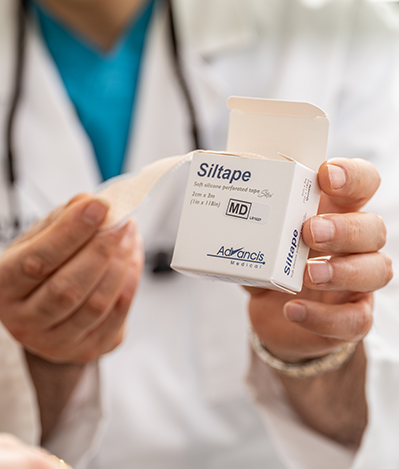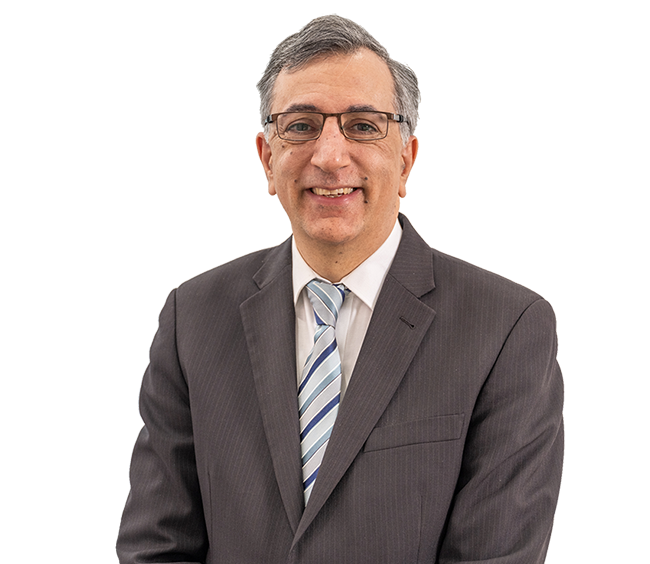Procedure Spotlight
- Designed to improve function or the aesthetic appearance of the female genitalia
- Improves functional problems and discomfort as well as aesthetic concerns
- Tissue is carefully removed and the area is reshaped without interfering with the nerves or sexual sensation
- It is important to have labiaplasty done by a specialist plastic surgeon who is used to handling delicate tissue, preserving nerves and can perform accurate and precise wound closure
The vagina is made of an inner lip (labia minora) and an outer lip (labia majora). In some women, the labia minora are too large, uneven, or non-symmetrical and can protrude beyond the labia majora. This can cause functional problems or discomfort as well as aesthetic concerns.
In women with functional problems, it can cause chafing and friction with clothes or irritation when exercising. It can also become uncomfortable or interfere with sexual activity.

Technique
Labiaplasty is performed under general anaesthetic in fully accredited Sydney hospitals. Dr Safvat only works with highly trained anaesthetics accredited with the Australian and New Zealand College of Anaesthetists. The operation takes around one to two hours to complete.
Dr Safvat’s aim is to delicately and carefully remove the excess tissue and reshape the region without interfering with the nerves or sexual sensation. The incisions are quite discreet too. It is important to only ever have labiaplasty done by a specialist plastic surgeon who is used to handling delicate tissue, preserving nerves and can perform accurate and precise wound closure.
Since this is a day procedure, patients can return home on the same day, provided someone can drive them home.
Some women may be more genetically prone to this concern and it can worsen with ageing, pregnancy and childbirth.

Procedure Snapshot
| Anaesthetic Type: | General Anaesthetic |
| Length of Surgery: | 1-2 hours |
| Stay in Hospital: | Day only |
| Downtime: | 1 week |
Recovery
During the first few days after the labiaplasty surgery, patients can expect some pain and swelling, which will improve at a gradual pace. It can take up to a week for these side effects to subside, however, this is different for every woman.
Patients should also know that blood-tinged discharge, bruising and discomfort when urinating can also occur after labiaplasty. All of these common effects can be managed with pain medication, ointments and proper cleansing.
Most patients are able to return to work after about a week. Any strenuous activity, sexual intercourse and tampons will need to be avoided for at least six weeks.

Some of the ways that you can make your recovery more comfortable is to wear loose, breathable clothing, to keep the area clean and to avoid intercourse until you’re completely healed from your labiaplasty. Using a donut pillow is also known to help.
Preparation
It is important to maintain a healthy lifestyle in the weeks leading up to your surgery. Dr Safvat will insist that you stop smoking for at last a month before your procedure as smoking can affect the healing process. Staying hydrated, eating healthy and getting enough sleep also helps. It is also important to arrange for someone to drive you home after your surgery and possibly assist you for a day or two. This can be especially helpful if you have children at home.
Scars
There is no way to prevent scars completely after surgery and everyone can scar differently. However, the techniques Dr Safvat uses to suture his wounds are designed to minimise scarring. What’s more, any scarring will fade over time, especially if they are cared for correctly.
Scarring varies between patients but after about six months, the scarring after labiaplasty will hardly be noticeable at all. One of the main benefits of labiaplasty is that any scars can be hidden in the folds of the labia. Dr Safvat uses proven techniques and his extensive experience to keep any scarring to a minimum. Over and above slight scarring, patients may also notice some slight discolouration in the area for a few months. This will improve over time though and the discolouration doesn’t look that different to the rest of the skin and tissue in the area.
Dr Safvat will provide you with his specific protocol for scar management that will help you protect and care for your incisions in a way that will minimise scarring.

Complications
While all care and diligence is taken by Dr Safvat to minimise or avoid complications, any surgical procedure can be associated with some general complications and/or specific complications related to the surgery you are having. Choosing a Specialist Plastic Surgeon such as Dr Safvat and having your procedure done in an accredited hospital minimises risks, as does using accredited Anaesthesists.
Some general surgical potential complications are:
• Infection that may require antibiotics (Dr Safvat prescribes all patients antibiotics after surgery to minimise this risk).
• Fluid build-up under the skin (seroma).
• Allergic reaction to dressings and other items used during the procedure.
• The formation of blood collection (haematoma) which could require additional surgery.
• Scars heal differently in different people. Some people are genetically prone to develop keloid scars. Hypertrophic scars develop when there is a complication in the healing process. Whilst not ideal, there is no threat to your health if you develop these.
• Anyone can have a heart attack or stroke from a clot. This risk is slightly increased with anaesthetics.
Some potential complications related to Labiaplasty surgery specifically are:
• Swelling, oozing and bruising is expected and in some can be quite severe. It will subside over the first few weeks after surgery.
• Asymmetry between the sides.
• Blood-tinged discharge and discomfort when urinating is possible, but will subside over the first few weeks.
• Delayed wound healing.
• Over or under correction of the initial issue.
• Change in sensation or numbness can occur which may affect sexual activity. In most cases this will resolve over time, but very occasionally this can be permanent. Dr Safvat’s technique is designed to minimise this even more.
Dr Safvat will go through the specific risks associated with Labiaplasty surgery with his patients, at their consultation in his Sydney and Bowral rooms.
Cost
Almost all cases of Labiaplasty are considered a cosmetic procedure and therefore do not attract any rebates from Medicare or your private health insurer. There will be surgeon, anaesthetist and hospital fees involved. The very rare cases that attract a Medicare rebate are extreme cases with very long Labia minora.
A full outline of fees will be provided to the patient after their initial consultation.
Frequently asked questions
Is Labiaplasty the right choice for me?
Labiaplasty may not be suitable for everyone. It is a highly individual procedure and it is important to be well informed regarding the procedure, risks and outcome expectations. During your consultation, Dr Safvat will assess your general health and suitability for the labiaplasty procedure.
Labiaplasty may be suitable for you if:
- You are physically healthy and not smoking
- You dislike the appearance your labia and/or have physical discomfort and your situation is amenable to surgical correction
- You understand the potential risks and complications
- You have realistic expectations
WHAT CAN I EXPECT OVER THE LONG TERM AFTER LABIAPLASTY SURGERY?
In general, the results of labiaplasty surgery should be long lasting. However, pregnancy and childbirth after the procedure may have some impact on your results.
ARE THERE ANY ALTERNATIVES TO LABIAPLASTY SURGERY?
Unfortunately, there is not any other options to reduce the size or change the shape of the labia minora.
WHEN WILL I SEE MY FINAL LABIAPLASTY RESULTS?
Every patient heals differently and your body will need time to rest and recover from your labiaplasty. Your results will gradually begin to take shape over the course of several weeks. All swelling will need to subside before you can see the final outcome. In most instances, the final results of your labiaplasty are visible after about three months.
WHAT ARE THE BENEFITS TO LABIAPLASTY SURGERY?
Labiaplasty surgery can assist with a variety of issues such as minimizing pain and discomfort, correct asymmetry of the labia minora, improve the appearance of a woman’s genitalia, improve ability to exercise and decrease discomfort with sexual intercourse.
Where does Dr Safvat perform this procedure?
Dr Safvat does the Labiaplasty procedure in the Sydney region (Sutherland Shire and Inner West) as well as in the Southern Highlands, NSW. He only operates in fully accredited Private Hospitals, these being Kareena Private Hospital (Caringbah), Strathfield Private Hospital, Southern Highlands Private Hospital (Bowral) and Ramsay Surgical Centre Miranda.
Before and Afters
Before and Afters for this procedure cannot be shown on our website.
You must be over 18 years to view Dr Safvat’s before and after image galleries
Dr Safvat is a fully qualified Specialist Plastic Surgeon. Every patient is unique and results may vary. Any surgical procedure carries risks which need to be discussed with your doctor to ensure you are fully informed and realistic outcomes have been explained. Before proceeding, you should seek a second opinion from an appropriately qualified health practitioner.
These photos are of actual patients of Dr Safvat. Each has given consent for the photos to be used by Dr Safvat only.
DR ANDRE SAFVAT (MED1155201)
Registered Medical Practitioner, Specialist Plastic Surgeon (specialist registration in Surgery – Plastic surgery).
Dr André Safvat – Specialist Plastic Surgeon
Renowned for his dedication to his patients, his attention to detail and impeccable outcomes, Dr Safvat’s unparalleled expertise is reflected in the quality, professionalism and dedication of every member of our team.


